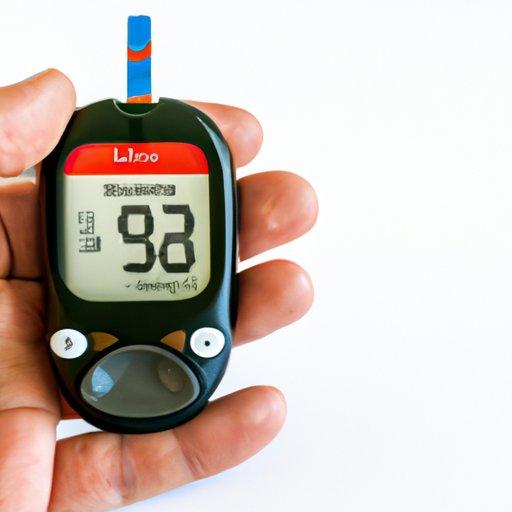
Introduction
Managing blood sugar levels is essential for people with diabetes or high blood sugar to maintain good health and prevent complications. Along with a healthy diet, exercise plays a crucial role in keeping blood sugar levels under control. In this article, we will explore the benefits of exercise for managing blood sugar levels. We will look at the different types of exercise and how they can be effective in lowering blood sugar levels. We will also discuss the complementary relationship between diet and exercise and why group exercise can be beneficial for blood sugar management.
The Benefits of Exercise for Lowering Blood Sugar
Physical activity has been shown to lower blood sugar levels, reducing the risk of complications associated with high blood sugar. Exercise helps increase insulin sensitivity, allowing the body to transport glucose into cells more effectively, reducing the amount of sugar in the bloodstream. According to research, regular exercise can reduce blood sugar levels by up to 20%. Aerobic exercise, such as brisk walking, cycling, and swimming, is particularly effective in lowering blood sugar levels. Strength training exercises such as weight lifting can also help maintain healthy blood sugar levels. However, it’s essential to start with moderate activity and gradually increase intensity.
The Role of Diet and Exercise in Managing Blood Sugar
Diet and exercise are both crucial components of managing blood sugar levels. A healthy diet can complement the effects of physical activity, further lowering blood sugar levels. Whole foods such as fruits, vegetables, whole grains, and lean protein can help regulate blood sugar levels. On the other hand, eating processed and high-sugar foods can contribute to high blood sugar levels and can lead to complications such as weight gain and heart disease. It’s essential to combine a healthy diet with regular exercise for optimal blood sugar management. Different types of exercise can affect blood sugar levels differently, with high-intensity interval training offering more significant benefits than steady-state cardio.
The Science Behind Exercise and Blood Sugar
Exercise affects blood sugar levels by increasing insulin sensitivity, enhancing glucose uptake by the muscles, and increasing metabolic rate, allowing the body to burn glucose more effectively. According to studies, exercise also increases the production of GLUT4, a protein responsible for transporting glucose into cells. This increase in GLUT4 production can result in lower blood sugar levels, making exercise an effective tool for blood sugar management. Regular exercise can also improve overall metabolic health, reducing the risk of heart disease and other complications that can arise from high blood sugar levels.
Exercise and Blood Sugar: Tips for Getting Started
For individuals who are new to exercise, it’s essential to start gradually and choose activities that are enjoyable and sustainable. Walking, cycling, yoga, or swimming are all great exercises for lowering blood sugar levels. It’s important to consult with a healthcare professional before starting a new exercise routine, especially for those with diabetes or other medical concerns. Additionally, it’s essential to monitor blood sugar levels before and after exercise to determine the best activity and intensity level for each individual.
The Benefits of Group Exercise for Managing Blood Sugar
Group exercise can provide an added motivation to maintain a regular exercise routine, making it a powerful tool for blood sugar management. Joining a group fitness class, cycling group or team sports can provide accountability and support while also making exercising more fun. Studies have shown that group exercise can improve adherence to exercise routines, while also improving overall wellbeing. It is worth noting that group activities are not suitable for everyone, and some individuals may prefer to exercise alone.
Conclusion
Exercise is a powerful tool for lowering blood sugar levels and managing diabetes. Aerobic exercise and strength training both play a significant role in controlling blood sugar levels, and when combined with a healthy diet, can provide optimal results. It’s essential to start slowly, seek guidance from a healthcare professional and monitor blood sugar levels. Joining group classes can provide motivation and accountability, making exercising more sustainable and enjoyable. Remember, managing blood sugar levels requires a balancing approach, including a healthy diet, regular exercise, and medical management as prescribed by healthcare professionals.





